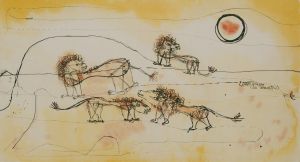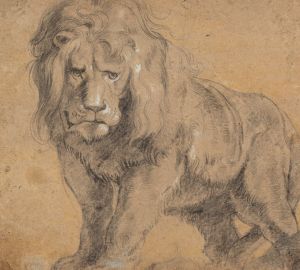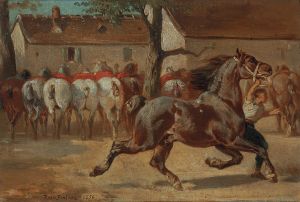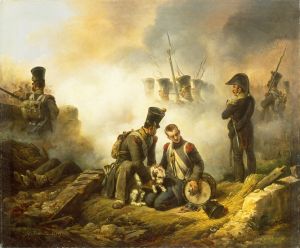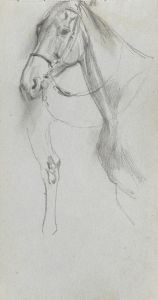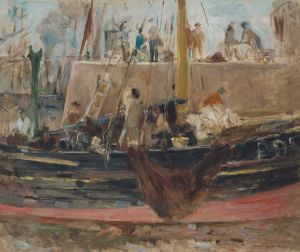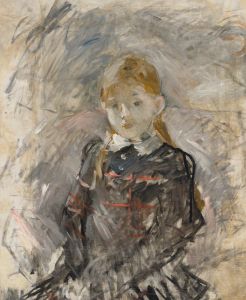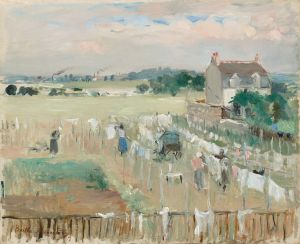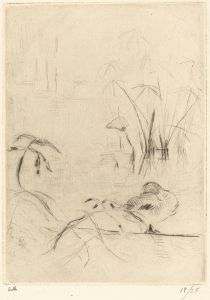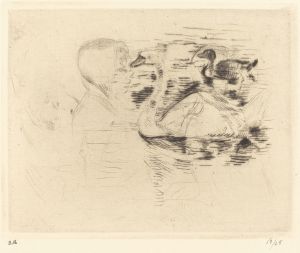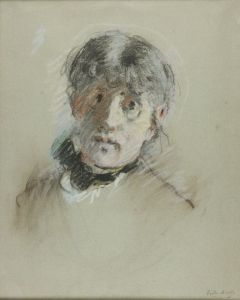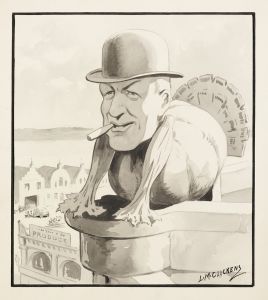
Swan and Duck, with portraits of Julie
A hand-painted replica of Berthe Morisot’s masterpiece Swan and Duck, with portraits of Julie, meticulously crafted by professional artists to capture the true essence of the original. Each piece is created with museum-quality canvas and rare mineral pigments, carefully painted by experienced artists with delicate brushstrokes and rich, layered colors to perfectly recreate the texture of the original artwork. Unlike machine-printed reproductions, this hand-painted version brings the painting to life, infused with the artist’s emotions and skill in every stroke. Whether for personal collection or home decoration, it instantly elevates the artistic atmosphere of any space.
"Swan and Duck, with portraits of Julie" is a painting by the renowned French Impressionist artist Berthe Morisot. Morisot, born on January 14, 1841, in Bourges, France, was a prominent figure in the Impressionist movement and one of the few women who were actively involved in this predominantly male art scene. Her work is celebrated for its delicate brushwork, use of light, and intimate portrayal of domestic life and family.
Berthe Morisot was deeply influenced by her close association with other leading Impressionists, including Édouard Manet, with whom she shared a lifelong friendship and artistic exchange. She was also related to him by marriage, as she wed his brother, Eugène Manet, in 1874. This connection further enriched her artistic environment and provided her with a supportive network within the Impressionist circle.
The painting "Swan and Duck, with portraits of Julie" features Morisot's daughter, Julie Manet, who was a frequent subject in her mother's work. Julie was born in 1878 and became a central figure in Morisot's paintings, often depicted in various stages of her childhood and adolescence. The inclusion of Julie in this painting highlights Morisot's focus on personal and familial themes, a characteristic element of her oeuvre.
Morisot's technique in this painting exemplifies her mastery of the Impressionist style. She employed loose, fluid brushstrokes and a light color palette to capture the ephemeral qualities of light and atmosphere. Her ability to convey the subtleties of natural light and the gentle interplay of colors is evident in the depiction of the swan and duck, which are rendered with a sense of movement and vitality.
The setting of the painting likely reflects Morisot's interest in outdoor scenes and her appreciation for nature. This aligns with the broader Impressionist movement, which often emphasized plein air painting and the exploration of natural landscapes. The presence of the swan and duck adds a dynamic element to the composition, contrasting with the serene and contemplative portrayal of Julie.
Berthe Morisot's contribution to the Impressionist movement was significant, as she brought a unique perspective to the depiction of domestic and everyday life. Her work challenged traditional gender roles in art by focusing on subjects that were often considered feminine or mundane, elevating them to the realm of fine art. Morisot's paintings, including "Swan and Duck, with portraits of Julie," continue to be celebrated for their sensitivity, elegance, and innovative approach to capturing the essence of her subjects.
Throughout her career, Morisot exhibited regularly with the Impressionists, participating in seven of the eight Impressionist exhibitions between 1874 and 1886. Her work received critical acclaim and contributed to the acceptance and recognition of women artists in the art world. Today, Berthe Morisot is regarded as one of the leading figures of Impressionism, and her paintings are held in high esteem in major art institutions worldwide.





